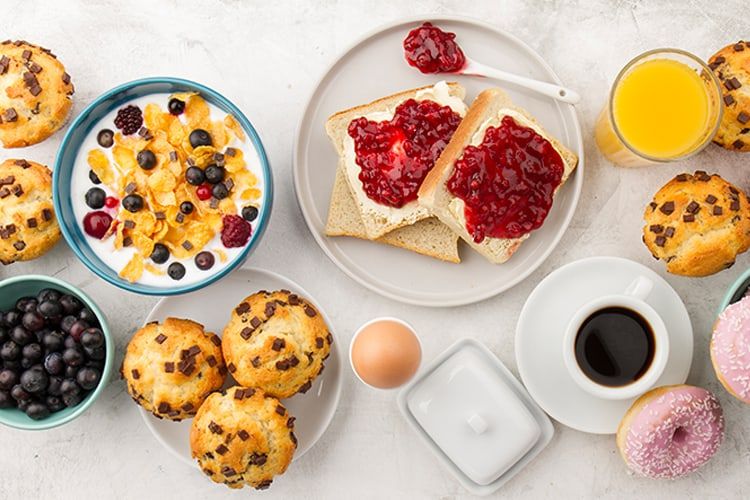Sign up for workout ideas, training advice, reviews of the latest gear and more.






The 80 20 diet plan is an eating strategy that promotes a balanced and flexible approach to food. Unlike restrictive diets, it focuses on nourishing the body most of the time while allowing for indulgences occasionally. This balance helps individuals maintain a healthy lifestyle without the guilt associated with stricter diet plans. Let’s explore how the 80/20 diet works, its benefits, and how to get started.
The 80 20 diet plan involves eating nutrient-dense foods 80% of the time and allowing for less healthy foods 20% of the time. This means prioritizing whole foods, like fruits, vegetables, lean proteins, and whole grains, while setting aside 20% of your intake for foods you enjoy, like desserts or processed treats. This structure is designed to encourage healthy habits without imposing rigid restrictions that often lead to feelings of deprivation or burnout.
The 80/20 rule isn’t about counting calories or sticking to specific meal plans; rather, it’s a guideline that encourages balance and mindfulness in food choices. Here’s a breakdown of how it works:
The 80/20 diet plan is more sustainable than restrictive diets because it doesn’t require cutting out any specific food group or severely limiting calorie intake. This flexibility reduces feelings of deprivation and helps people stick to the plan long-term.
By allowing for occasional indulgences, the 80/20 diet helps prevent binge eating, which is often a response to highly restrictive diets. Knowing you can enjoy your favorite foods in moderation can help reduce cravings and make it easier to maintain healthy eating habits.
Strict diets can create stress and anxiety, often leading to a negative relationship with food. The 80/20 plan reduces the pressure to “eat perfectly,” promoting a healthier mindset and helping individuals feel more in control of their choices.
The emphasis on nutritious foods 80% of the time makes it easier to manage weight while enjoying the foods you love. This balance helps people maintain a healthier lifestyle without the yo-yo effect of restrictive dieting and inevitable binge cycles.
Start by creating a list of nutrient-rich foods you enjoy, including fruits, vegetables, whole grains, lean proteins, and healthy fats. This list will form the basis of your 80% intake. Keep these foods readily available, and focus on incorporating them into your meals.
Decide on indulgent foods that you genuinely enjoy and find satisfying. Having a clear idea of what your 20% will consist of can help you stay mindful and prevent mindless snacking or eating out of boredom.
The 80/20 diet plan encourages mindfulness in all eating habits. Try to be present and mindful of each meal, savoring the taste and texture of your food, whether it’s part of the 80% or 20%. This helps with portion control and can lead to more satisfaction from each meal.
Meal planning can make it easier to stick to the 80/20 rule. Plan out your week with meals that focus on whole, nutrient-dense foods, and decide where to incorporate your 20% indulgences. This might mean having a dessert after dinner on weekends or treating yourself to a favorite snack once or twice a week.
Here’s a sample meal plan to help visualize how the 80/20 diet might look over a week:
One of the main points of the 80/20 diet is to remove guilt from eating. Enjoying a treat doesn’t derail your progress or make you “bad.” Embrace the balance and remember that the occasional indulgence is part of a sustainable plan.
The 80% is the foundation of the diet, so make an effort to prioritize nutritious foods and create balanced meals. Consistency with this portion of the diet helps establish healthy habits and gives you more flexibility with your 20%.
Keep a food journal or use a tracking app to monitor your eating habits. While you don’t need to count calories, tracking can help you stay aware of your 80/20 balance and give you insights into how you feel physically and mentally.
While the 80/20 diet allows for indulgences, it’s not a free-for-all. The goal is to have occasional treats in moderation, not to consume large quantities of junk food.
While it may seem less structured than other diets, the 80/20 approach is based on a strong foundation of healthy eating. Its flexibility makes it effective and sustainable in the long term, helping people maintain healthy habits without the burnout of a strict diet.
Perfection isn’t the goal; consistency is. If you slip up occasionally, don’t stress. The 80/20 rule is about maintaining a balanced approach overall.
The 80/20 diet plan aligns with research supporting the health benefits of a balanced approach to eating. Studies show that moderate indulgences can help people adhere to long-term healthy eating habits more effectively than restrictive diets. Additionally, the focus on nutrient-dense foods 80% of the time supports heart health, metabolic function, and overall well-being.
The 80/20 diet plan is a sustainable, balanced approach to eating that allows for a variety of foods while promoting healthy habits. It is less about perfection and more about consistency, making it an accessible option for those looking to maintain a healthy lifestyle without extreme restrictions. With its flexibility and focus on balance, the 80/20 diet plan offers an effective way to eat well, feel great, and enjoy the foods you love.
Incorporating the 80/20 approach can lead to a healthier mindset toward food, reduce the likelihood of binge eating, and provide a realistic framework for long-term well-being. Whether you’re new to healthy eating or looking for a sustainable way to maintain your current lifestyle, the 80/20 diet can offer a practical solution that’s easy to stick with.
Stay up to date on the latest women’s health, fitness and lifestyle trends and tips.